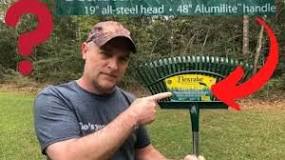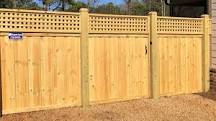When it comes to yard work, you might be wondering, what’s the difference between a rock rake and a landscape rake? Simply put, a rock rake is designed specifically for removing rocks and debris from soil, while a landscape rake is more versatile, used for leveling soil and spreading materials like gravel or mulch.
Rock Rake: The Heavy Hitter
A rock rake is your go-to tool when you’re dealing with rough terrain. Here’s what makes it stand out:
Designed for Debris Removal
- The tines on a rock rake are typically longer and sturdier. They dig deep into the ground to pull up rocks, roots, and other unwanted materials.
Ideal for Construction Sites
- If you’re prepping land for building or landscaping, this rake can really save you time. It helps clear out the junk so you can start fresh.
Tough and Durable
- Built to handle heavy loads, rock rakes are often made from high-quality steel. They can take a beating without bending or breaking.
Landscape Rake: The Versatile Companion
On the flip side, we have the landscape rake. This tool is all about finesse and versatility.
Leveling and Grading
- With shorter tines that are spaced closer together, landscape rakes excel at leveling soil. They help create a smooth surface for planting or laying sod.
Spreading Materials
- Whether you’re working with mulch, gravel, or topsoil, a landscape rake spreads materials evenly. It’s perfect for those finishing touches in your garden.
Great for Lawn Care
- If you want to maintain your lawn’s health, this rake can help break up compacted soil and promote better aeration.
Summary
In summary, while both rakes serve their purposes in landscaping and yard work, the rock rake is all about heavy-duty debris removal, whereas the landscape rake focuses on leveling and spreading materials. Depending on your project needs, choosing the right tool can make all the difference in your efficiency and results.
FAQ
What type of projects are best suited for a rock rake?
Rock rakes are ideal for projects where you need to clear land of rocks and debris before construction or heavy landscaping work. They excel in rough terrains where traditional rakes might struggle.
Can I use a landscape rake for removing rocks?
While you can use a landscape rake to remove smaller rocks and debris, it’s not as effective as a rock rake. If you have larger rocks or significant debris, stick with the rock rake for better results.
How do I maintain my rakes?
To keep your rakes in good shape, regularly clean them after use to remove dirt and debris. Check for any bent tines or loose bolts and repair them promptly to ensure longevity.
Are there attachments available for tractors?
Yes! Both rock rakes and landscape rakes often come as attachments for tractors. This makes it easier to handle larger areas quickly and efficiently.
Now that you know the differences between these two handy tools, you’re all set to tackle your next landscaping project like a pro!







